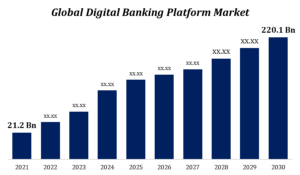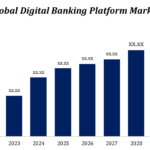Neobanks: Disrupting Traditional Banking with Digital-First Solutions
The traditional banking landscape is undergoing a seismic shift as neobanks, also known as digital banks or challenger banks, emerge as disruptive players. Neobanks are revolutionizing the way people manage their finances by offering innovative, technology-driven solutions that prioritize convenience, transparency, and user-centric experiences. In this article, we will explore the rise of neobanks, their unique features, benefits, and their impact on traditional banking.
The Neobank Revolution:
- Digital-First Approach: Neobanks operate exclusively online, utilizing mobile apps and websites to deliver banking services, challenging the brick-and-mortar banking model.
- Customer-Centric Design: Neobanks prioritize user experience, offering intuitive interfaces, real-time updates, and personalized financial insights.
- Agile and Innovative: Neobanks leverage technology to rapidly develop and deploy new features, responding to customer needs in real-time.
Key Features of Neobanks:
- Ease of Account Opening: Neobanks streamline the account opening process, often allowing customers to create accounts within minutes.
- Mobile-First Experience: Neobanks provide mobile apps that enable users to perform a range of banking activities conveniently from their smartphones.
- Fee Transparency: Neobanks often boast transparent fee structures, reducing hidden charges and providing clarity to customers.
- Budgeting and Spending Insights: Neobanks offer tools that categorize spending, set budgets, and provide insights into financial habits.
- Integrations and Partnerships: Neobanks collaborate with fintech companies, enabling customers to access a broader array of financial services within a single app.
Benefits of Neobanks:
- Convenience: Neobanks provide 24/7 access to accounts, enabling users to manage their finances on their terms.
- Lower Fees: Neobanks often have lower fees and offer competitive foreign exchange rates, making international transactions more affordable.
- Financial Insights: Users gain insights into their spending habits, helping them make informed financial decisions.
- Global Accessibility: Neobanks eliminate geographical limitations, allowing users to transact and manage their finances from anywhere.
Impact on Traditional Banking:
- Competition and Innovation: Neobanks are prompting traditional banks to innovate and improve their digital offerings to stay relevant.
- Financial Inclusion: Neobanks are filling gaps in traditional banking by catering to underserved populations and individuals without access to brick-and-mortar banks.
- Partnerships and Collaboration: Some traditional banks are collaborating with neobanks or launching their digital banking arms to stay competitive.
Challenges and Considerations:
- Regulatory Compliance: Neobanks must navigate complex regulatory landscapes to ensure consumer protection and security.
- Trust and Awareness: Establishing trust and educating users about the security of digital banking are crucial for neobank adoption.
- Monetization Strategies: Neobanks must develop sustainable revenue models to support their operations, as many offer free or low-cost services.
Future Outlook:
- Expansion of Services: Neobanks are likely to diversify their offerings, including lending, investment, and insurance services.
- Personalization and AI: Advancements in artificial intelligence will enable neobanks to offer even more personalized financial solutions.
- Regulatory Collaboration: Collaboration between neobanks and regulators will help establish clear guidelines for digital banking operations.
Neobanks are rewriting the rules of banking, offering a compelling alternative to traditional financial institutions. Through their digital-first approach, user-centric design, and emphasis on transparency, neobanks are meeting the evolving needs of modern consumers. As they continue to innovate and expand their services, neobanks are poised to shape the future of banking, offering a glimpse into a world where banking is seamlessly integrated into the digital fabric of daily life.
Top of Form


































